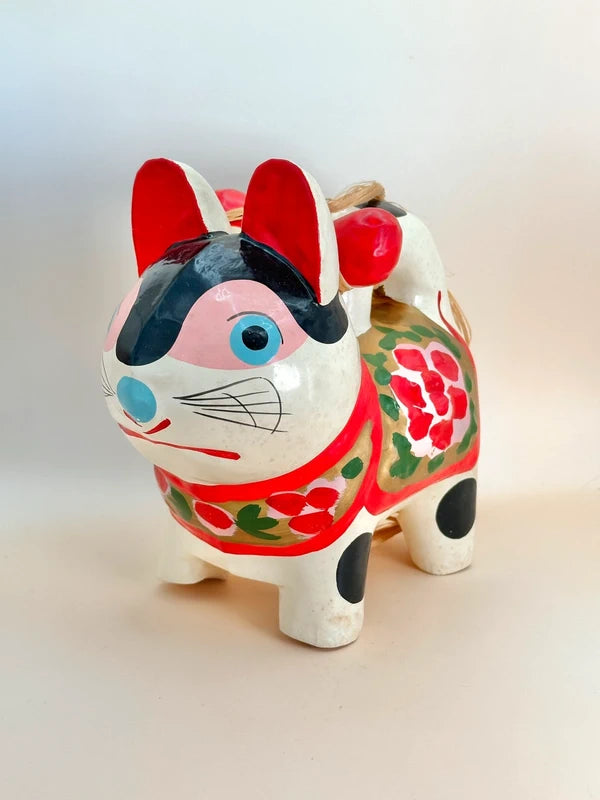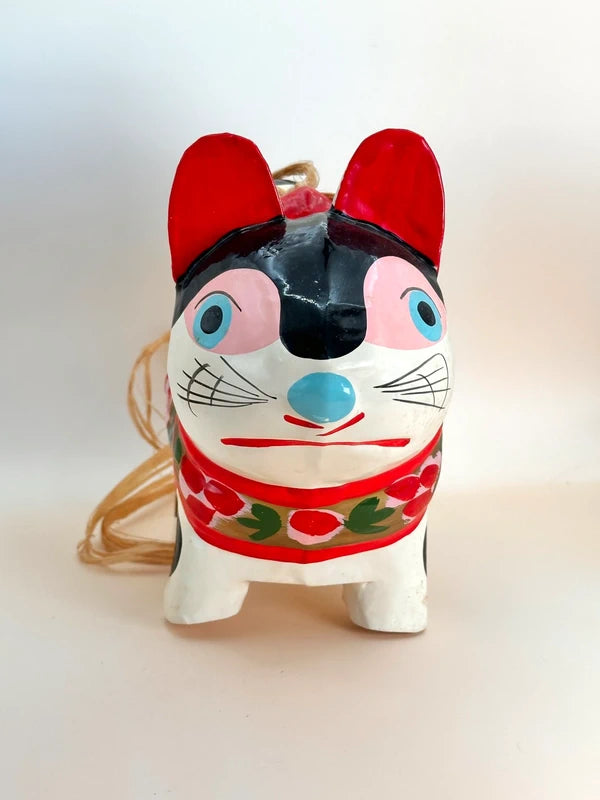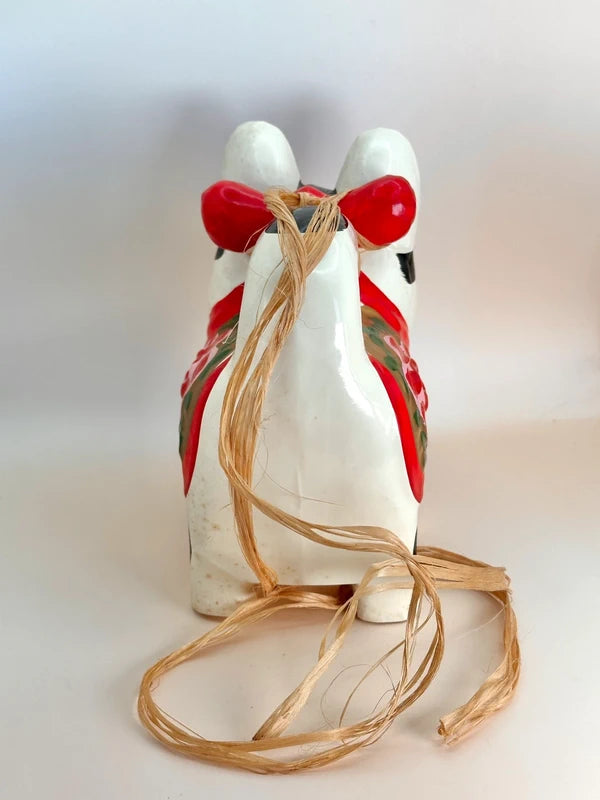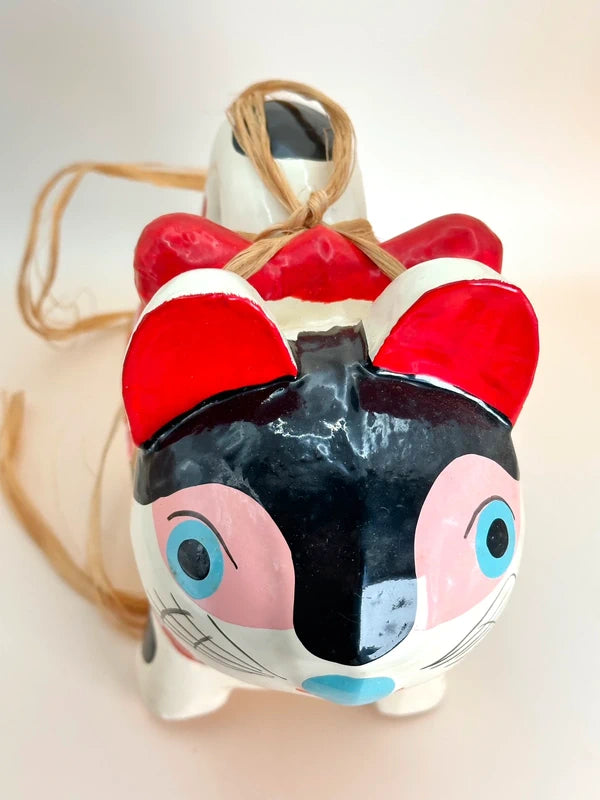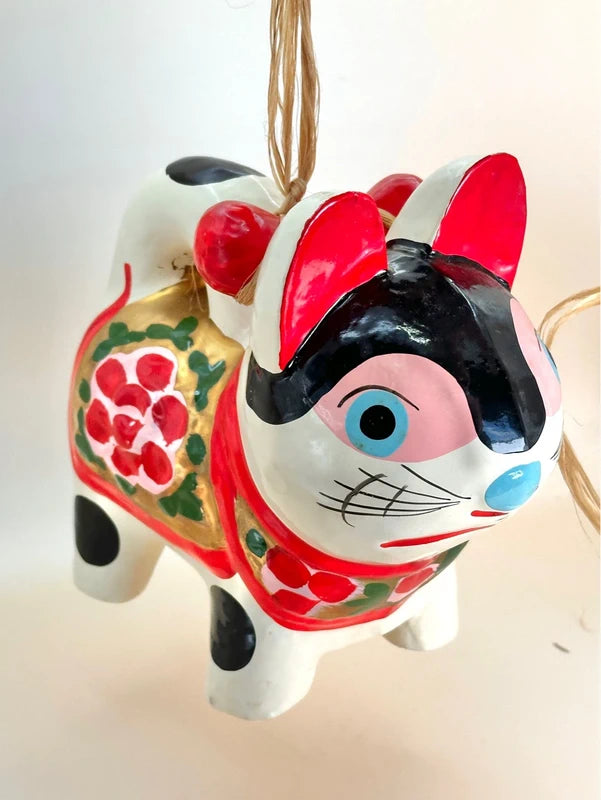FT187 - LARGE Nagoya Inu Hariko folk craft 犬張子
FT187 - LARGE Nagoya Inu Hariko folk craft 犬張子
This is a LARGE Inu Hariko (papier-mâché dog) folk craft from Nagoya, Aichi Prefecture, dating back to the 1980s. Handcrafted with vibrant colors, it features a playful expression with large round eyes, a black mask over its head, bright red ears, and a blue nose. The body is decorated with a red floral bib and a colorful saddle-like blanket adorned with peony-like blossoms.
The Inu Hariko, or papier-mâché dog, is a beloved symbol of protection, good fortune, and maternal care in Japanese folk tradition. Its roots trace back to the Edo period (1603–1868), when it was commonly crafted as a talisman to guard infants and support safe childbirth. The dog, or inu in Japanese, was revered for its loyalty and gentle nature — but more significantly, it was associated with fertility and easy delivery due to its ability to bear many pups with little difficulty. This natural symbolism made it an ideal protective charm for expectant mothers and newborn children.
Made from lightweight hariko (papier-mâché), these figures were often given as gifts during special milestones, such as a baby’s hatsumiyamairi (first shrine visit) or shichi-go-san (a festival celebrating the healthy growth of young children). Families would place the Inu Hariko near a baby’s sleeping space, trusting in its presence to ward off illness and malevolent spirits. With its wide, round eyes and brightly painted body, the Inu Hariko exudes a sense of joyful alertness — always watchful, always protective. Over time, various regions in Japan developed their own versions of the Inu Hariko, each with distinctive decorations, colors, and expressions. In places like Nagoya, the figures often feature bold floral motifs, thick black outlines, and festive details like bells or harnesses. Despite regional differences, the core symbolism remains consistent: the dog is a guardian, a companion, and a bringer of good fortune.
Size: 20 x 10 x 18cm
Share

